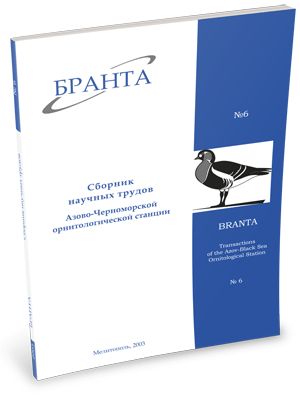
Transactions
of the Azov-Black Sea Ornithological Station



New method for the complex estimation of a form of the egg
Mitiay I.S.
Basing on the detailed analysis of the geometric form of a regular ovoid we developed an original method for describing diversity of egg form. This method excludes random actions of the researches when choosing names, axes for measurement and indices evaluation. It was traced that current national and foreign methods for describing egg form are mostly discordant and not geometrically based. We propose ranging the form of eggs according to the symmetry of their polar zones: a) symmetric - radii of arcs of the zones are equal; b) monoasymmetric - radius of the arc of more orbed zone is a half of maximal diameter; c) biasymmetric - radius of the arc of more orbed zone (ri) is less than a half of the diameter, but exceed the radius of the arc of a sharper zone (cloacal).
From more than 20 indices of the form only the lengthening index is proved to be profitable V=L/D. Insufficient comprehension of this index is compensated at the expense of the form index developed by the author.
For the first time it is proposed to use double ratio (where W - double ratio; a, b, c - line segments. It was cleared that the closest relation is between the segments of the egg length (L): a=rc; c=ri; b=L-(a+b). To estimate the index of the total form the upper equation was transformed as W=(rc+b)(b+ri)/bL. This equation can be instantiated depending on the geometry of each egg type, so we need only two parameters L and D for estimating.
The easiest way of getting these parameters is a scaled photo of eggs. The latter provides wide perspectives for the computer analysis of the egg form according to specially developed programs.
The proposed method allows generalizing current methods and materials received with their help. Apart from this it is possible to restore oological notes of last years. To do this we must diagnose the egg form of some species, and then perform relevant calculation and analyze it basing on the present notes.
Read the paper in a PDF file